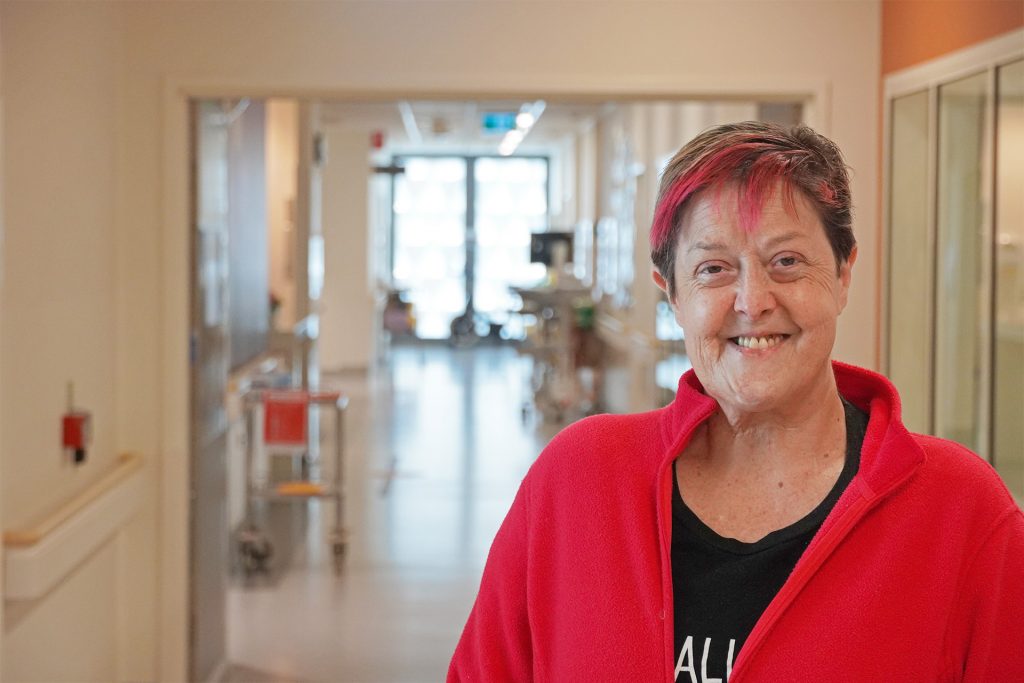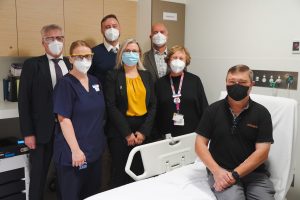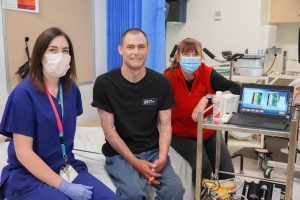Improving the treatment experience and health outcomes for future patients was the motivation for Tereena Cocks to volunteer for a clinical research study at the Royal Adelaide Hospital.
Tereena, a former nurse and paramedic, received a stem cell transplant from a healthy donor as part of her leukemia treatment. A common complication of the procedure, Tereena developed graft-versus-host disease (GvHD) which occurs when the transplanted immune cells attack the recipient’s own cells.
In Tereena’s case, she developed sclerodermoid GvHD, which caused her skin to become thick, tight and hard. These skin changes are seen in several other rare conditions, including morphea and scleroderma, and can cause significant functional impairment particularly when overlying joints.
The right treatment, faster
Assessing changes in disease activity and damage is critical to determine appropriate treatment and its effectiveness.
For sclerosing dermatoses, clinicians currently do so using a subjective scoring system that relies on skin appearance and palpation, but such tools can be time-consuming to perform and require training and experience to use.
“I could see that there was not a lot known about the sclerotic manifestations of my condition and certainly no prior or ongoing assessment of my skin or its range of movement before undergoing stem cell transplantation. It made it difficult to get a quick diagnosis and start on any treatment options,” said Tereena.
The aim of the study, led by Dr Emma Ryan, Consultant Dermatologist, at the Royal Adelaide Hospital, is to determine whether ultrasound is a useful tool for monitoring these conditions.
“With ultrasound, we can measure characteristics such as skin thickness. This allows for detection of disease progression and early intervention,” said Dr Charlotte Velik, Dermatology Research Registrar.
“Ideally, obtaining these measurements would enable clinicians to make more informed decisions about whether to commence treatment and, in the case of patients already on treatment, prompt consideration of alternative treatment options.”
“Hopefully with quicker detection and assessment – treatment options can be initiated much earlier allowing people to live a longer and healthier life,” added Tereena.
Paving the way for world-class care
For Tereena, contributing to new knowledge and better care for future patients was a rewarding experience.
“My experience was wonderful to know that someone was taking an interest in me and were acknowledging the degree of health burden associated with the disease,” she said.
“I hope that being in this study will make it easier for anyone going through the stem cell transplant process. Hopefully with quicker detection and assessment – treatment options can be initiated much earlier allowing people to live a longer and healthier life.”
It’s thanks to volunteers like Tereena that health and medical researchers can continue to innovate, according to Dr Velik.
“I’m incredibly grateful for patients like Tereena who volunteer to be involved in research. They’re doing it because they are compassionate and want to help other people,” she said.
“It’s the outlook of these patients that enables us to conduct research and improve outcomes for future patients. It’s really inspiring to see.”
More about the research
This study is a prospective cohort study, comparing ultrasound to a pre-existing cutaneous assessment tool, as a means of assessing the status and progression of sclerotic dermatoses. Recruitment for the study has now closed.
The two-year study commenced in October 2021 and will continue until October 22.



